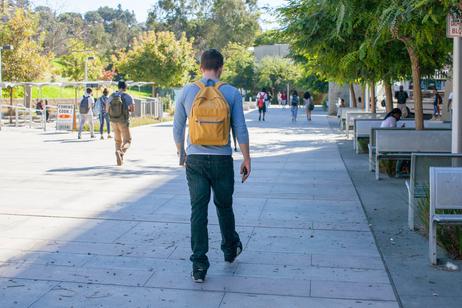Enrollment has been growing by exponential numbers at many community colleges across the country, as an economic slowdown and high unemployment rates have sent many adults back to school in search of training. Then in 2020, the COVID pandemic turned the education scene at every level upside down. Community colleges nationwide experience significant drops in enrollment. Most colleges switched from in-person classes to online classes.
Stabilizing Enrollment Still Features High Numbers
While community college enrollment may be stabilizing, the number of students in community college today versus four years ago is still much higher.
“It’s not that enrollment is down,” Kent Phillipe, senior research associate for the American Association of Community Colleges told Inside Higher Ed. “It has essentially stopped growing.”
Phillipe explained that community college enrollments have “stabilized at a high number,” indicating that although growth may be slowing, there are still record numbers of students at community college campuses across the nation. In some ways, the stabilization may ease the strain on community colleges that have been struggling to find ways to accommodate more students every year. The job has been particularly challenging in light of the many state budget cuts that have resulted in less state funding to the very schools that are trying to ramp up their programs to meet the increasing enrollment needs.
“When rising enrollments maxed out their classrooms and swamped their registration systems, community colleges had to be creative and find solutions,” Walter G. Bumphus, president, and CEO of the American Association of Community Colleges told Inside Higher Ed.
More predictable enrollment levels should allow community colleges to continue on the path they are currently on, “rather than scrambling to handle new growth,” according to Phillipe. Schools that have now found ways to accommodate larger student populations can now work on perfecting their current systems, rather than continuing the quest for more services and course selections with less funding in their pockets.
Enrollment Data Specifics
The research, which was compiled jointly by the American Association of Community Colleges and the National Student Clearinghouse, drew data from at least 700 two-year institutions. The numbers demonstrated a one-percent decline in community college enrollment nationwide, although enrollment figures are still 22 percent higher than they were in 2007. According to a report from the Chronicle of Higher Education, those percentages translate to around 8.3 million community college students nationwide.
The Chronicle also reports that the number of students with Pell Grants increased by 17 percent, bringing the total number of students with Pell Grants to about 34 percent of the total student population. The number of full-time community college students decreased, while the total figures for part-time students increased slightly.
Anecdotal evidence suggests that some states may have seen a much bigger decline in community college enrollment, including Connecticut, Illinois, Iowa, and Michigan. While no one can predict with 100-percent accuracy the reason for bigger declines in some states than others, factors that go into the enrollment numbers may include demographic shifts, high unemployment rates, and state budget cuts. Even those factors can change from state to state and institution to institution, making it even more challenging to make complete sense of enrollment data.
Slow Economy Boosted Community College Growth
The biggest factor that most education experts attribute to the recent surge in community college growth is the economic slowdown. As more adults found themselves out of work, community college seemed like a good place to train quickly for a new career. By the same token, high school graduates who suddenly found themselves without tuition money for four-year universities discovered community college to be an affordable solution to higher education.
Community colleges traditionally see higher enrollment numbers when the economy goes south. In the case of this most recent recession, enrollments reached record numbers, as many found themselves without a job or any prospects of employment in the near future. Training in new industries was a must, and community colleges were the perfect options for those who needed marketable skills in a hurry. While the increased enrollment is fairly easy to understand, the decline may not be as simple to pinpoint. However, the economy may not play the same role in this enrollment shift.
According to the report at the AACC website, the decline in full-time students may be due to a number of factors. However, the authors of the report do not believe that a more robust economy is the primary reason for the shift. U.S. News and World Report cites the report as saying, “There seems little reason to think that reduced intensity of enrollment is due to an improvement in economic conditions.” The increase of students with Pell Grants maybe just one indication that financial conditions do not play into the change in enrollment numbers. Another could be the increase in part-time students, which could indicate that fewer students are able to afford the full-time tuition rates.
While researchers continue to study the possible reasons behind the shift in community college enrollment numbers this year, schools can benefit from more stable, predictable student populations. Now many schools can take the time to capitalize on programs they have already introduced, rather than grappling to come up with creative solutions for an explosive student population. Students will also benefit, with more courses to choose from and fewer waitlists for the courses they need.
Questions? Contact us on Facebook. @communitycollegereview















